
“Marketing is no longer about the stuff you make, but about the stories you tell,” writes marketing guru Seth Godin—a line that has echoed across boardrooms, pitch decks, and brand manifestos for over a decade. Far from being a clever soundbite, the sentiment captures a fundamental shift in how brands seek to connect with audiences. In today’s saturated media landscape, where consumers are inundated with content, storytelling has evolved from a creative tool into a strategic necessity. Advocates hail it as the key to emotional resonance and enduring brand loyalty. Critics, however, caution that its popularity risks turning it into yet another industry buzzword.
But is storytelling truly the marketing silver bullet it’s made out to be, or has its promise been overstated? To answer that, it helps to understand why stories resonate so deeply. Storytelling is hardwired into human culture and cognition—an ancient mechanism for sharing knowledge, values, and experiences. Neuroscience backs this up: according to Paul J. Zak, Ph.D., a neuroeconomist at Claremont Graduate University, compelling narratives stimulate the release of oxytocin, a hormone associated with empathy and trust. Unlike raw data or statistics, stories activate multiple regions of the brain, forging richer, more memorable connections. In marketing, this translates into deeper engagement, stronger emotional responses, and a greater likelihood of influencing behavior.
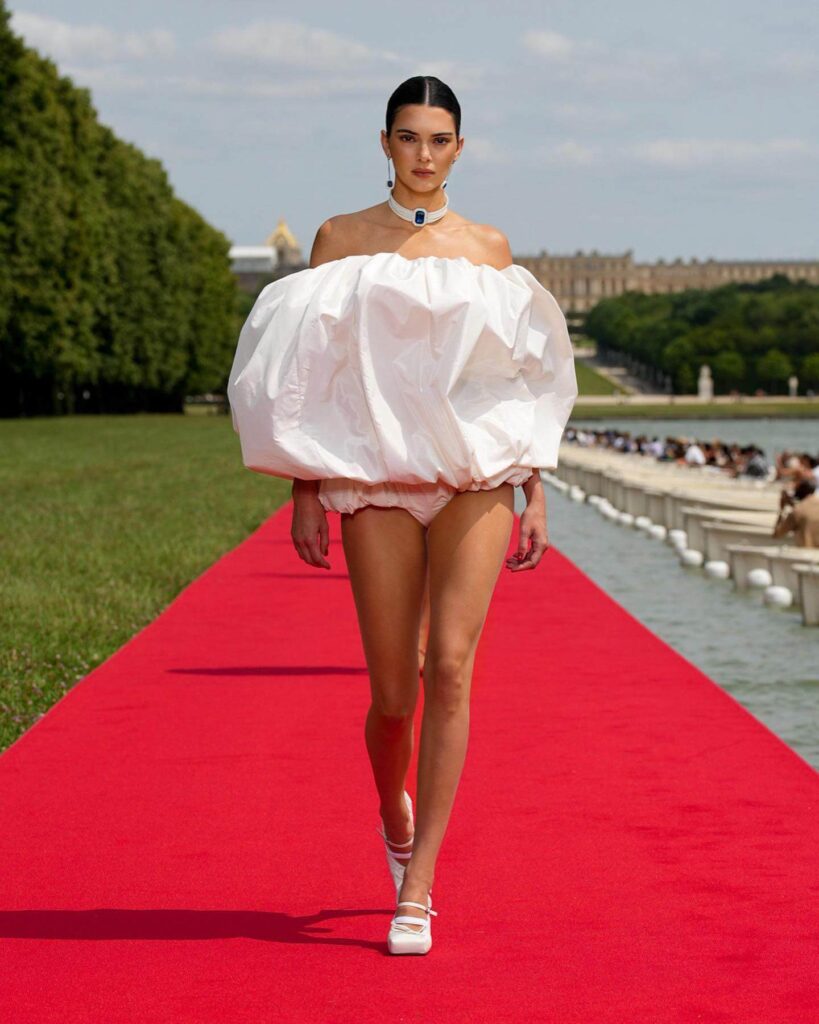
Courtesy of Jacquemus
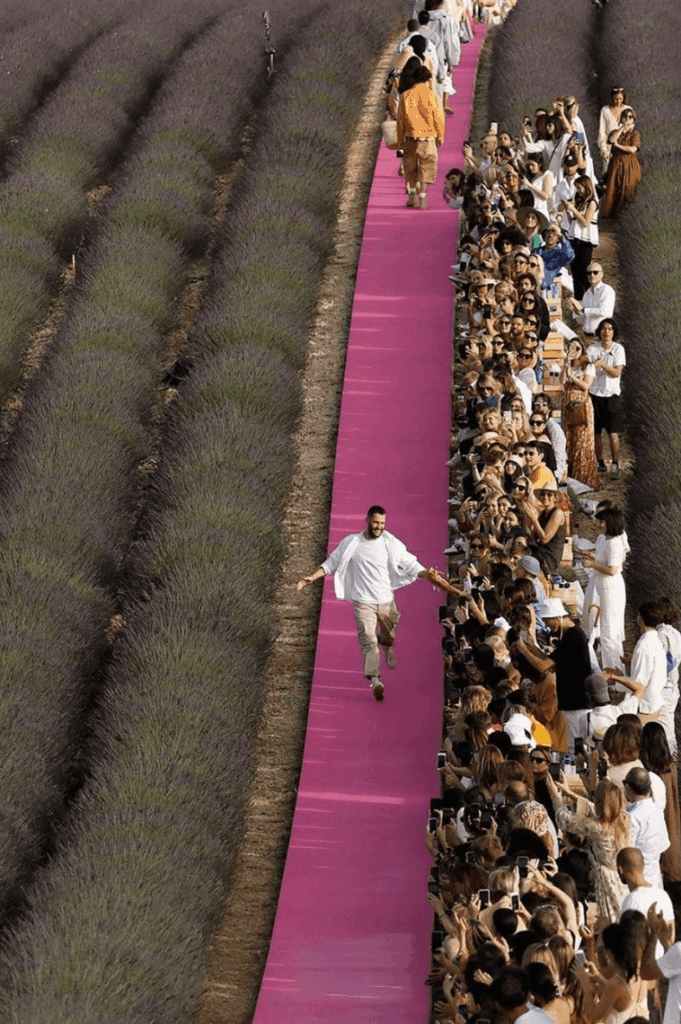

Courtesy of Jacquemus
Jacquemus is known for transforming fashion shows into poetic, cinematic experiences that dissolve the line between product and place. From lavender fields in Provence for Le Coup de Soleil, where a hot pink runway cut through endless purple blooms to celebrate the brand’s 10th anniversary, to the salt marshes of Aigues-Mortes for Le Papier, where models walked atop mountains of white salt in paper-inspired silhouettes, each setting becomes an extension of the collection’s mood and narrative. In 2023, Jacquemus turned the Grand Canal at Versailles into a floating runway for Le Chouchou, where guests viewed the collection from small boats, drifting across the water as models showcased the latest designs against the grandeur of the palace. This year, the brand returned to Versailles with Le Paysan, staged in the Orangerie to close Paris Men’s Fashion Week.
Since founding the label in 2009, Simon Porte Jacquemus has built a brand defined by visually striking spectacles that merge fashion with storytelling. His collections, often infused with personal nostalgia, childhood summers in the south of France, cherished family memories, and the enduring influence of his mother, come to life through some of the most iconic, immersive runway experiences in contemporary fashion.

Photography by Shoji Fujii
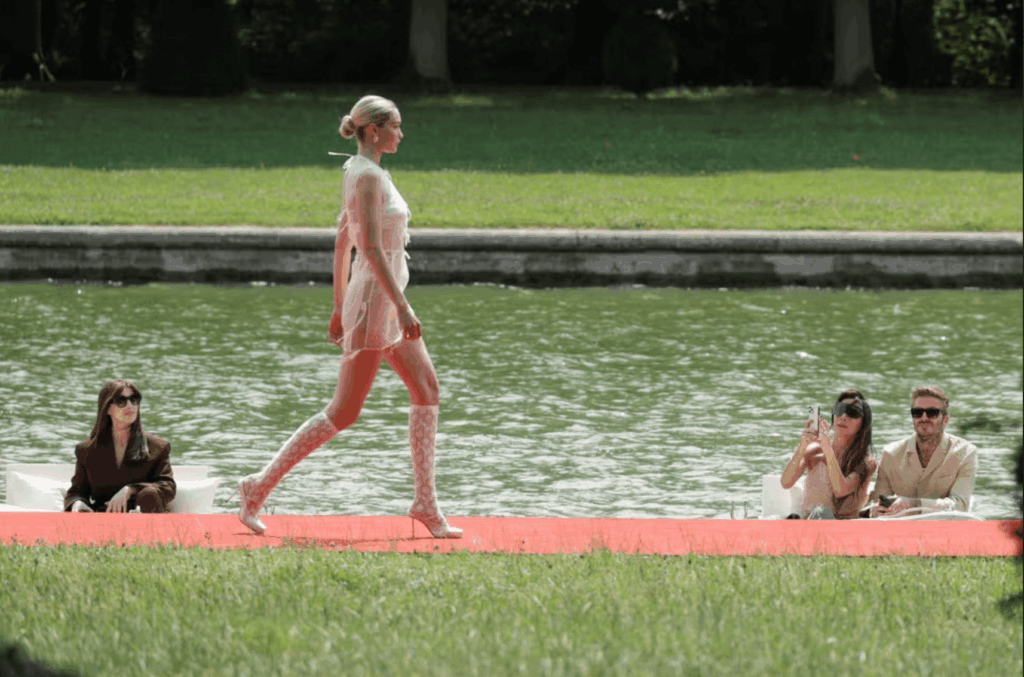
Photography by Pascal Le Segretain
Chanel is another great example. Its narrative extends beyond luxury and effectively infuses the idea of female empowerment into its brand storytelling by focusing on themes of independence and liberation. Their Inside Chanel series illustrates this beautifully, presenting the brand’s history through a collection of 32 short films available on its website. These emotionally rich chapters recount iconic moments, such as founder Coco Chanel’s early life and rise to fame, and her revolutionary vision to introduce trousers and shorter hemlines while abandoning corsets in the 1920s. By sharing this legacy, Chanel integrates its heritage into contemporary campaigns, reinforcing a timeless message of female empowerment that continues to resonate in today’s world.

Courtesy of Nike

Courtesy of Nike
While luxury fashion houses lean into heritage and founder-led narratives, global sportswear brands such as Nike take a different but equally powerful approach to storytelling. Nike’s iconic Just Do It slogan is more than a tagline, it’s a philosophy embedded in every campaign. Take Nike’s memorable Dream Crazier campaign, narrated by Serena Williams, as an example. The ad highlights not just her own journey, but the broader struggles faced by women in sport. Featuring powerful visuals of female athletes who have challenged stereotypes and defied expectations, it reframes what it means to be called “crazy,” turning it from a criticism into a badge of honour. Williams’ narration draws from her personal experience, chronicling how she transformed from a young girl with a dream into one of the most celebrated athletes in history. More than a showcase of her victories, the campaign delivers an inspiring narrative of persistence, resilience, and the courage to challenge norms. This narrative-driven strategy allows Nike to forge deep, personal connections with its audience, making the brand not just aspirational, but deeply human.
In recent years, brands are pushing narrative even further, from traditional campaigns into entirely new, digital realms. One particularly exciting frontier is gaming culture, where storytelling becomes not just immersive, but interactive. Video games like Animal Crossing, Pokémon GO, Fortnite, Roblox, and Minecraft have become new runways for digital self-expression, with brands like LV, Burberry, Marc Jacobs, Valentino, Moncler, Balenciaga and Gucci launching in-game collections that mirror real-world designs. In gaming, consumers don’t just see a story. They live it. It’s a new chapter in fashion marketing where interactivity, world-building, and narrative immersion redefine how brand stories are told. These collaborations allow fashion brands to enter new spaces of identity-building, especially among younger, digitally native audiences.

A similar kind of innovative and immersive storytelling can be seen in Loewe’s collaboration with Studio Ghibli, where fashion meets fantasy through the lens of Japanese animation. Drawing from beloved films like My Neighbor Totoro, Spirited Away, and Howl’s Moving Castle, Loewe didn’t just produce a collection. It created an emotional portal into Ghibli’s imaginative universe. The marketing leaned heavily on visual storytelling, nostalgia and craftsmanship, celebrating the shared values of both brands: artistry, wonder, and attention to detail. Through dreamy campaign visuals and playful set design, the collection invited consumers not just to wear a product, but to step into a story. In doing so, Loewe tapped into a powerful fanbase and proved how narrative worlds, even those born in cinema, can be seamlessly woven into the fabric of fashion marketing.
As powerful as storytelling can be, it’s not without its pitfalls. When overused or executed poorly, narrative-driven campaigns risk falling flat, or worse, damaging the brand. For example, overly emotional stories can come across as manipulative, especially if they feel disconnected from the actual product or brand values — as seen in Pepsi’s controversial ad featuring Kendall Jenner. In some cases, brands become so focused on crafting a compelling tale that they lose clarity around the product itself, like Balenciaga’s 2022 campaign, where the shocking narrative overshadowed the actual clothing. The line between inspiration and confusion blurs, leaving audiences unsure of what’s being sold or why it matters, similar to H&M’s “Coolest Monkey” campaign, which provoked backlash and distracted from the product entirely.
In 2020, Lululemon, the Canadian sportswear giant that turned skin-tight black leggings into a fashion piece, faced widespread backlash after promoting a workshop on “decolonizing gender” and “resisting capitalism” on its social media channels. Coming from a multi-billion-dollar corporation, the messaging struck many as tone-deaf and performative, exposing a glaring disconnect between the brand’s capitalist structure and its chosen narrative of anti-capitalist values.

Courtesy of American Eagle

Courtesy of American Eagle
More recently, American Eagle drew criticism for its “Good Jeans” campaign starring the Euphoria star Sydney Sweeney. The ad featured the actor posing in denim with the tagline: “Sydney Sweeney Has Great Jeans.” What seemed like a playful pun on “genes” sparked controversy when critics pointed out the phrase’s historical association with eugenics, highlighting how even light-hearted storytelling can backfire when cultural context is overlooked. While the brand quickly clarified its intent by posting a statement on Instagram that “‘Sydney Sweeney Has Great Jeans’ is and always was about the jeans—her jeans, her story,” the backlash underscores the importance of cultural and political sensitivity in creative campaigns. In today’s world, a single misstep can shift the narrative from clever to careless, putting brand equity at risk.
These examples highlight a key takeaway for brands: when storytelling feels misaligned or tone-deaf, it can erode trust instead of building it. Audiences today are highly attuned to authenticity, and they are quick to call out anything that feels performative or hollow. When the story feels inauthentic, disconnected from the brand’s identity or even regressive, it can do more harm than having no narrative at all. Besides, context matters a lot. In B2C marketing, where emotional connection is key, storytelling can, without a doubt, enhance relatability. But in B2B contexts, decision-making often relies heavily on data, proof points, or case studies rather than on narrative arcs. Moreover, the return on investment (ROI) of storytelling-led marketing often can be difficult to measure, particularly when there’s no strong call-to-action or direct link to conversion.

Courtesy of Ogilvy
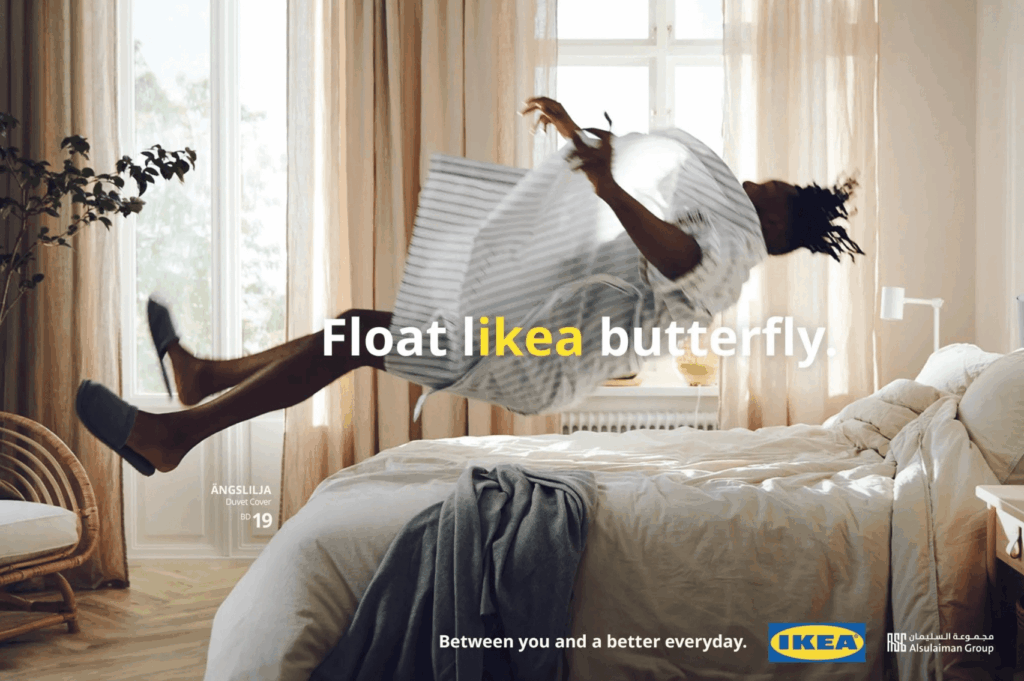
Courtesy of Ogilvy

Courtesy of Ogilvy
Therefore, some would argue that not every product or campaign needs a dramatic narrative arc to succeed. Some of the most memorable and effective campaigns demonstrate that storytelling doesn’t have to be grand or overly emotional, especially when the product speaks for itself. Brands like IKEA and Canva show that clear, clever, and grounded messaging can be just as impactful.
IKEA is a prime example of a brand that consistently resonates with consumers without relying on overt emotional storytelling. Its campaigns often centre on real-life challenges, like small-space living, budget-friendly home design, or family life approached with humour, practicality, and relatability. Rather than spinning a dramatic narrative, IKEA reflects back its audience’s daily experiences, making the messaging feel both personal and authentic. Its storytelling is subtle, grounded, and effective precisely because it doesn’t try too hard.
In early 2025, Canva took over London’s Waterloo Station with a playful campaign that turned creative frustrations into humorous billboard copy. Rather than relying on an emotional hook, the campaign showcased product features like Magic Resize and background removal with bold, witty headlines. This approach turned everyday design pain points into moments of connection—light-hearted, clever, and immediately relevant. Without a sweeping narrative, Canva still told a story, one about ease, empowerment, and creative possibility, but through the product itself.
This rings true in fashion marketing as well. When a product delivers genuine value or innovation, straightforward marketing can often be the most powerful approach. A standout in this regard is Uniqlo. Rather than relying on elaborate storytelling, Uniqlo has built its brand around product excellence, functionality, and thoughtful cross-sector collaborations. Its marketing rarely leans on emotional arcs or cinematic flair. Instead, it focuses on the tangible qualities that matter to consumers such as comfort, durability, simplicity, and price.
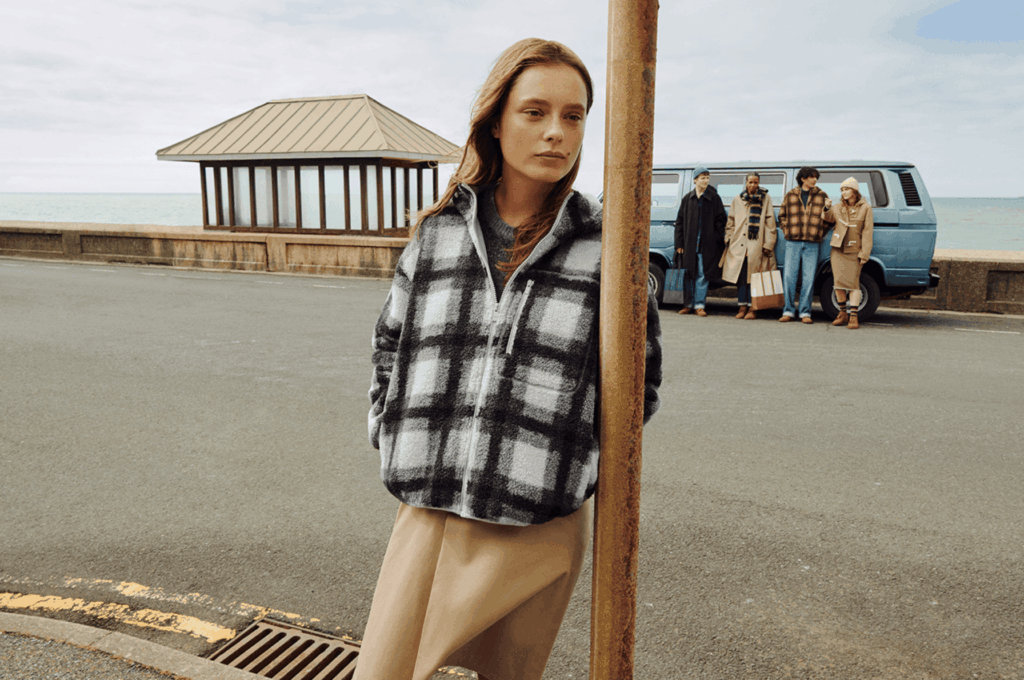
Courtesy of Uniqlo
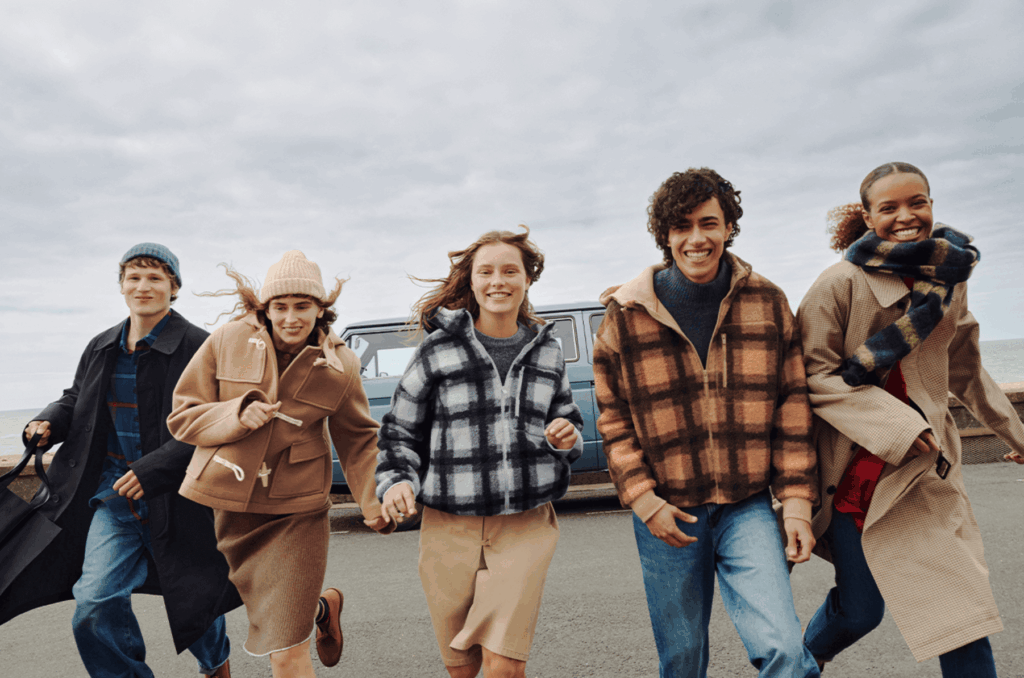
Courtesy of Uniqlo
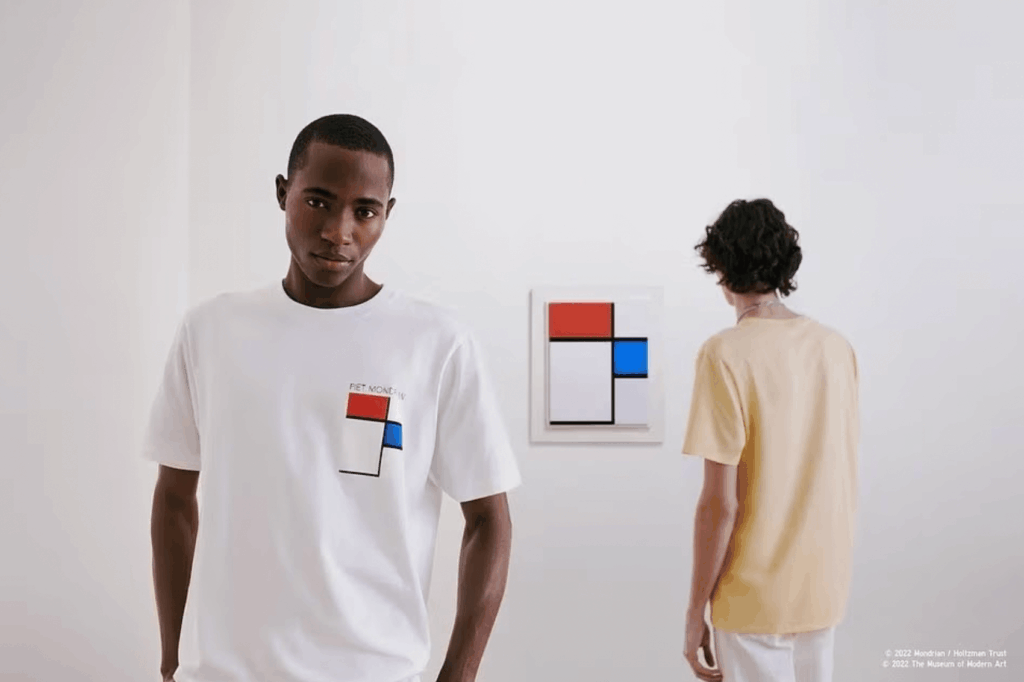
Courtesy of Uniqlo
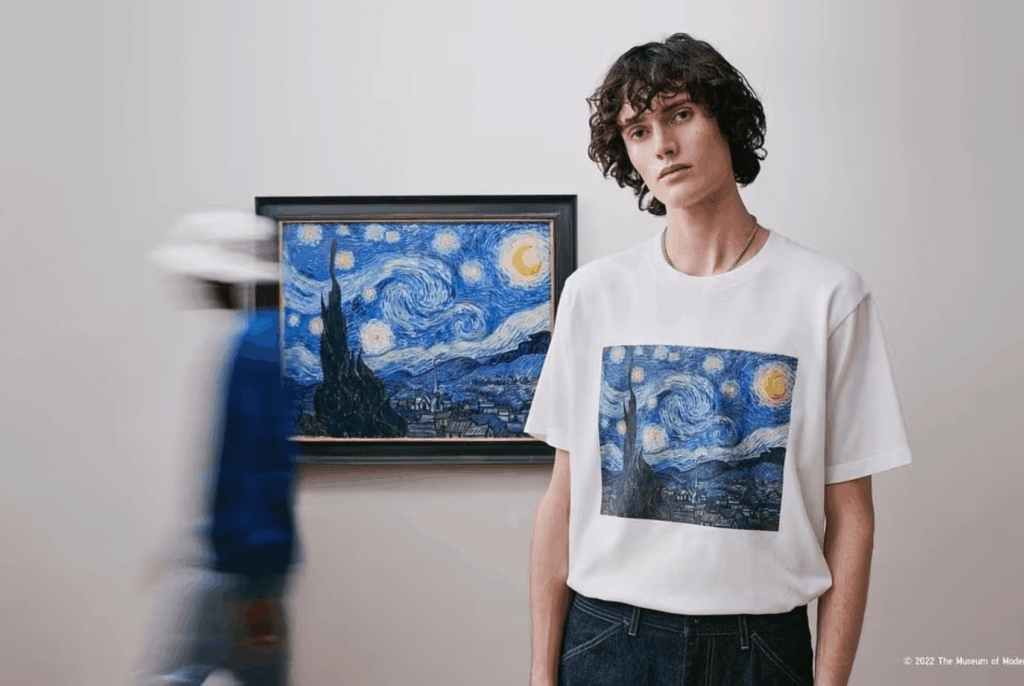
Courtesy of Uniqlo
One of Uniqlo’s most successful marketing strategies has been its collaborations with artists, designers, and cultural institutions. From partnering with avant-garde fashion designers like Jil Sander, JW Anderson and Christophe Lemaire, to working with brands like Marimekko or institutions like the Museum of Modern Art, these collections bring a sense of credibility and creative edge to Uniqlo’s otherwise minimalistic offerings. The appeal lies not in a dramatic brand story, but in the merging of design innovation with accessible pricing, a message clearly communicated through product-focused campaigns. In an era where storytelling often dominates marketing conversations, Uniqlo proves that clarity, consistency, and collaborative ingenuity can be just as persuasive, if not more, especially when the product could effectively do most of the talking.

This is a powerful reminder that storytelling is only a tool in marketing. It certainly isn’t a myth, but it isn’t magic either. It’s a powerful tool, not a universal solution.
The best marketers know the difference and use storytelling intentionally, not religiously. With that in mind, here are some key principles to help decide when storytelling truly supports your marketing goals.
Storytelling works best when it’s rooted in genuine purpose, such as launching a mission-led brand, sharing an emotional journey, or building long-term community resonance. But not every campaign needs a narrative. When speed, clarity, or practicality are the priority, forcing a story can do more harm than good. As storytelling becomes the default in many agencies, it’s important to use it strategically, not dogmatically. Instead of asking “What’s our story?”, consider how you might empower your audience to participate, explore everyday “micro-stories,” or extend storytelling into user experience and customer service. Audiences can quickly spot when a story is contrived or overly produced. The most effective campaigns often highlight genuine moments, real voices, and relatable experiences rather than aiming for cinematic perfection at all costs.
So, what’s the next evolution in storytelling? As technology advances, storytelling in marketing is evolving far beyond traditional formats. It is moving toward experiences that are immersive, participatory, and deeply personalised. Rather than simply telling a story, brands are inviting audiences to step inside it, or even shape it. Perhaps it’s time for fashion to borrow a few tricks from cinema and TV, where world-building and audience immersion are foundational.
A good marketing campaign for reference is the 2025 Grand Central Station takeover for Apple TV+ original series, Severance Season 2, where a large glass box brought the show’s eerie Lumon office setting into the real world. NYC’s commuters could witness and, in some cases, participate in the unsettling routines of the characters inside. This campaign didn’t just promote a TV series, it blurred the boundary between fiction and reality, proving how audiences increasingly seek stories they can feel, touch, and even co-create.
As marketing evolves, storytelling will too—toward co-creation, personalisation, and purpose. Brands that treat storytelling as a craft, not a doctrine, will connect more deeply and meaningfully. So don’t worship the story. Build it, live it, and let it evolve.
Words: Natalie Wong

